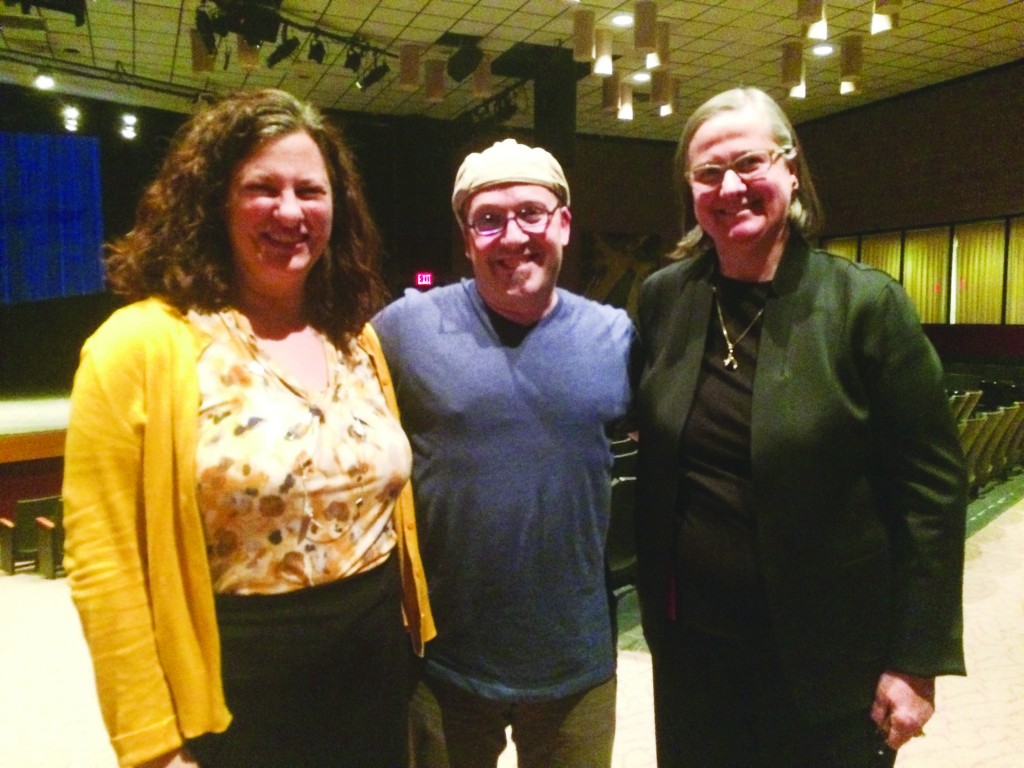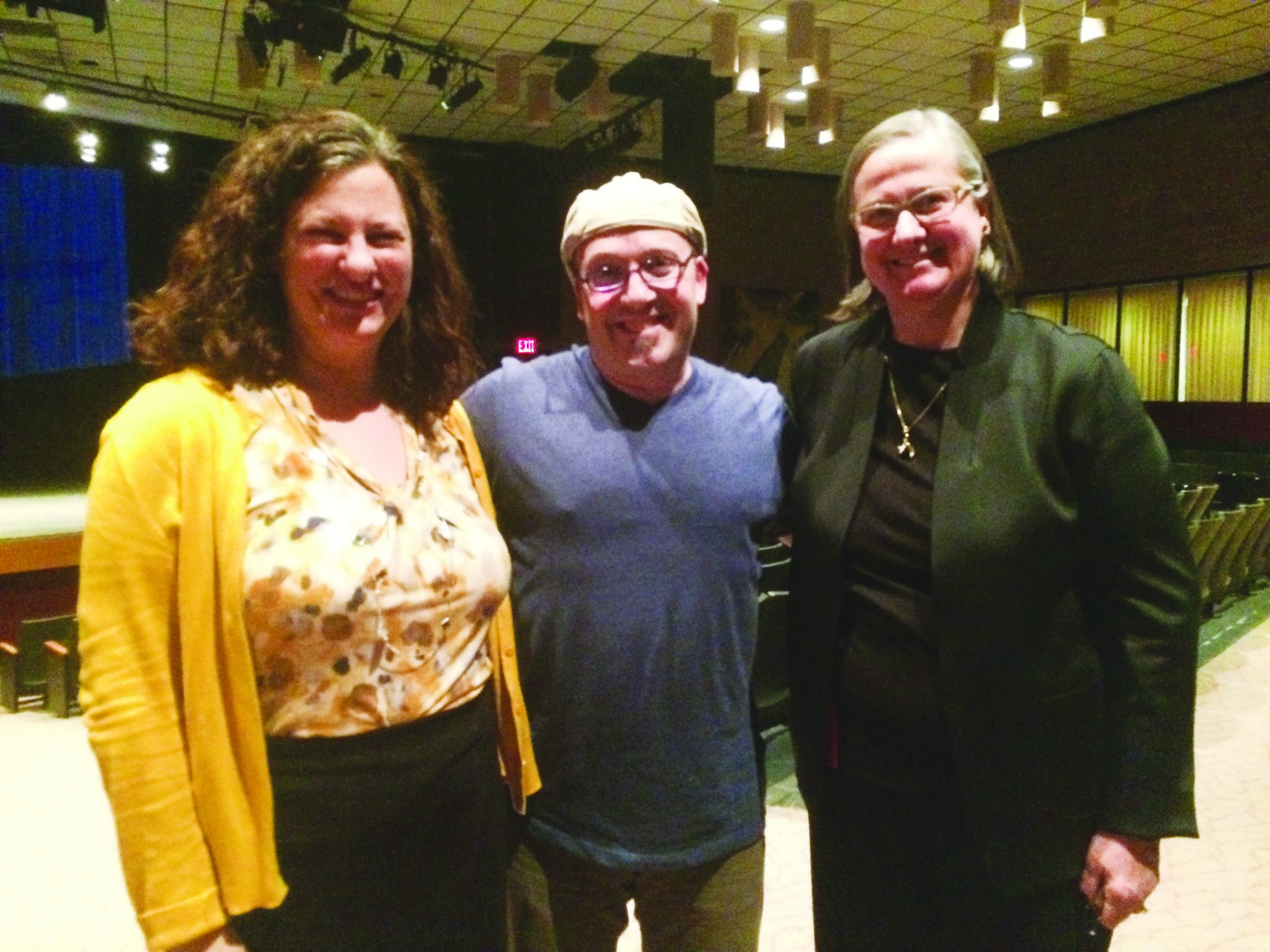By Melanie Spina
Assistant A&E Editor
On Wednesday, Nov. 5, students, faculty, and guests had the chance to not only watch a screening of the documentary: “Miriam Beerman: Expressing the Chaos,” but to also have a Q&A with director of the film, Jonathan Gruber.

The film is about the life of artist Miriam Beerman who now suffers from dementia. In the movie, viewers have a chance to take a peek into what her life as an artist was like. The movie begins with a piece of Beerman’s art shot from above, which Gruber calls a “Grand Canyon Effect.”
“The way we did this was by taking high resolution photos flat and then with shadows from each side,” Gruber said. “So with the shadows, the computer then can extrapolate typography from it, so it kind of blended them all together and you have these sort of mountains on top and you could fly through it and do all sorts of cool things. Which I liked a lot because I never had seen that before and we stayed true to her art.”
The documentary touches on all aspects of her life and it shows all the hard times Beerman had to endure; she was born with an illness, later on had a horrible car accident, and eventually lost her husband at
a very young age. You can see her struggles reflected in her art, since a great deal of her painting were very haunting images that portray the suffering of not only herself but of generations of victims.
“I’ve only known her for a number of years and I don’t know her that well but it seems that she does have this sort of spunkiness to her and everyone that meets her seems to find this lightness,” Gruber said when asked whether her dark art portrayed the person Beerman was. “You know, I think just like anything we do some sort of catharsis. Her art does help her get it out,” he added.
“I think there is a lot of chaos in my work,” Beerman said in the documentary, “and I am not trying to put order to the chaos, I am expressing the chaos. It’s inside of everyone but it’s certainly inside of me. Everyone has it most people don’t admit it.” Her art is inspired by German expressionism.
While Gruber prepared the setup for the film, he said that it was a lot of organizing the art into slides and taking pictures. “She is very prolific so it was a pretty laborious process,” Gruber said. “But some of the work stood out, some was iconic. Bill (Beerman’s son) helped a lot in guiding us in the right direction.”
Beerman first thought of the movie in 2011, and because of her loss of memory they had to search for some old interview to get a good narrative.
“We screened this film with people who were part of the Memory Project in Wisconsin and we were talking about how it’s therapeutic on some level for them,” Gruber said, referring to how art may help Beerman with her memory loss. “But the art is different through a person with dementia and I think we are imposing our own values of sadness on it so it’s important to look at it in a different way.”
“One thing that has been really interesting is that the process of this film while she forgets a lot she has been able to retain that the film is being made about her,” Gruber said. “And the watching of the film, which she has done a lot, helps her retain her memories about her life. Out all of the things that have happened with this film that is the most satisfying. So it’s really therapeutic for her.”
People can find Beerman’s art on her website; it shows the places that have some of her collections. According to Gruber, some of her art is at the Metropolitan Museum of Art in the New York area.
“What I understood through the making of this film is that as hard as it is being a filmmaker, it’s much harder to be a fine arts artist,” Gruber said. “I mean she is a woman with an incredible career and she is in 16 institutions but many people haven’t heard of her she is in the collection that means it’s in the basement and they don’t bring it out.”
Beerman’s lack of desire and/or ability to push herself really struck Gruber. “I am curious of artist todays, teachers, if part of your education is to learn how to present new work and how to market yourself and while that might be distasteful its certainly a part of how you get yourself out there,” Gruber said.
“I think she (Beerman) probably could have done a lot more if she marketed herself and I guess this film is about her rediscovering her while she is still alive and celebrating her,” he added.
The reason why Gruber decided to take on this project was mainly because he is friends with Beerman’s son Bill Beerman.“But still I thought she was a very interesting person and we got a bit of funding from one of her patrons and did some interviews and eventually it came together into a 40 minutes cut and it was truly independent film making,” Gruber said.
Gruber assures that this documentary is nothing like the films he has done in the past. He has never worked on an art film; he wanted to make something that was interesting, not something where he purely focused on her influences.
“Art people might love that but I felt like I really wanted to make it more accessible for people,” Gruber said. “So I wanted to make it funky and cool, have good stories of her struggles as a women artist in the art world in the ‘60s and ‘70s, as well as her struggles now with dementia.”
“This is the third event of [a] six part series of the In Person On Screen Film Series, which was started in support of the Mid Atlantic Arts Foundation grant,” said Sharon Maier-Kennelly, General Manager and Director of Programming Initiatives for the Tilles Center. “Technically this is the last one for this semester. We had one in September, October, and now November. Next semester we are continuing for February, March, and April.”
“Once the films were chosen and they were on the schedule I was asked to reach out to different constituencies in the university, students, professors, etc,” said Clara Zahler, Campus Arts Liaison. “So I try to bring people into the house to experience the artist first hand with master classes and residencies. This was a great opportunity to reach to components of the campus that we normally don’t reach out to, for example art therapy was here. I kind of wish that we had had more art students but I was thrilled to see the students here that were interested.”
The films chosen for this series are very varied. According to Mair-Kennelly, next years schedule is as follows: The first film in February will take place in the concert hall and it will be about the Carter Cash family. In March there will be a film called “Rebel,” which is about a young Puerto Rican girl who moved to the U.S. to become a confederate soldier and therefore hides her gender and nationality. Finally in April, which is poetry month, there will be a film called “Deaf Jam,” which is about poetry jams for both hearing and ASL.




Be First to Comment